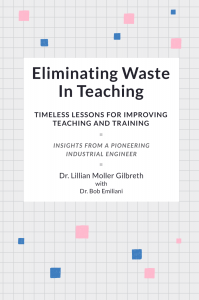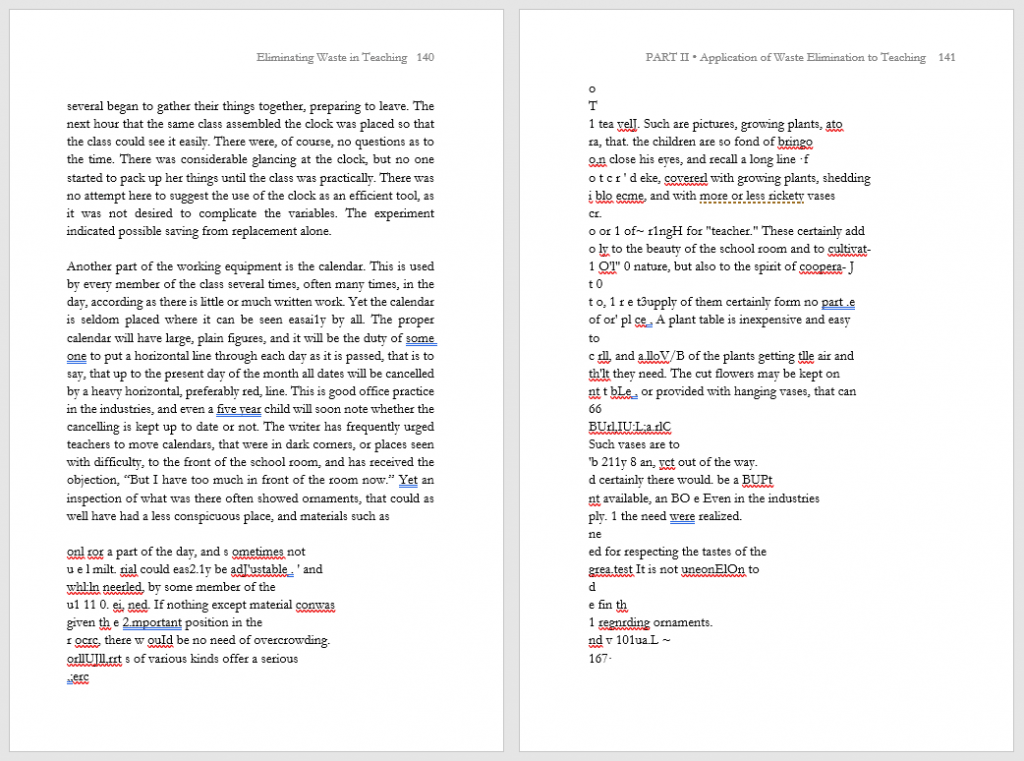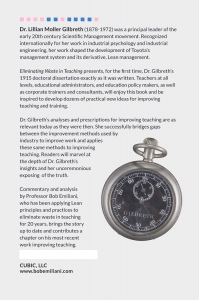
This is the backstory to the book Eliminating Waste in Teaching.
For more than 15 years I have been a dedicated student of the history of management. The particular years of interest are 1890 to the early 1930s, a time known as the Progressive Era. It was during this era that a new system of management, Scientific Management, was developed and put into practice in industry. My interest in Scientific Management, and the establishment of the new discipline, industrial engineering, is because they are direct antecedents to Toyota’s management system. Of particular interest were the struggles that the leaders of the Scientific Management movement faced to gain executive interest in adopting Scientific Management. The opposition they ran into from managers almost exactly parallels what we have faced with Lean management. There is much to learn from our predecessor’s efforts to advance progressive management – both their successes and failures.
Two of the great pioneers of Scientific Management and the then new discipline of industrial engineering were the husband-and-wife team of Frank (7 July 1868 – 14 June 1924) and Lillian Gilbreth (24 May 1878 – 2 January 1972). Each had great individual talent, and together they did remarkable work in motion study, fatigue study, and efficiency. They were innovators in the development of new technologies and methods for understanding and improving work.
Lillian Gilbreth was the founder of industrial psychology. She is famous for having humanized the practice of progressive Scientific Management and industrial engineering. She had wide-ranging social and technical interests, and her work was published in engineering journals, books, and trade magazines. She was a giant in her time and became world famous by the late 1910s.
One day not long ago, I remembered something I had forgotten — Lillian Gilbreth obtained her doctorate from my alma mater, Brown University in Providence, Rhode Island. So on a warm and sunny August day, I went to have a look at Dr. Gilbreth’s doctoral dissertation, titled “Some Aspects of Eliminating Waste in Teaching,” housed in the John Hay Library special collections. I was amazed by what I read and felt a strong connection to her work because for 20 years since leaving industry, I too had been finding ways to eliminate waste in teaching based on Toyota production system (TPS) principles and practices — what I call the “Lean Teaching pedagogy.” Remarkably, Dr. Gilbreth’s doctoral dissertation was never published and had fallen into obscurity.
A few days after my visit to Providence, I decided that I wanted to bring this important work back to life and publish it as a book. Fortunately, Brown University archivists had digitized Dr. Gilbreth’s dissertation in 2015. I obtained the digitized version and then learned that her dissertation was not yet in the public domain. In U.S. copyright law, the author of an unpublished work retains copyright for 70 years after their death. The dissertation would enter the public domain in 2042. That means I had to find Dr. Gilbreth’s heirs and obtain permission to publish her dissertation.
Ernestine Gilbreth Carey was one of Dr. Gilbreth’s 12 children. Her obituary in The New York Times identified a daughter and son. After some Internet searches, I was able to locate her daughter, Lillian, age 80. I called her and she was happy to take my call, and she gave me the phone number of her brother Charles, age 76, who handled permission requests for the family. I called Charles and we had a very nice conversation. I subsequently sent him a detailed e-mail outlining my plan for publishing his grandmother’s doctoral dissertation. A few days later, permission was granted by the family.
Next came the task of importing the digitized version of Dr. Gilbreth’s doctoral dissertation into an MS Word document. The dissertation was poorly digitized and there was no easy way to import the document in whole or part into Microsoft Word. So I had to import the text of her dissertation one page at a time, for all 398 pages. The image below shows what the imported text looked like. Not every page was this bad, but it shows what 150 or so pages looked like. It was a long and tedious task to important the text page-by-page and make anywhere from 25 to 100 or more corrections per page. But, that is what you do when you are driven to bring an important work back to life.

But more than being an historical work, “Some Aspects of Eliminating Waste in Teaching” highlights problems with teaching that still exist today and includes proven, practical recommendations for improvement that remain valid today — whether for teaching in the classroom or training in industry. And, fundamentally, what is TPS and Lean if not a never-ending effort to teach and train managers and workers? In fact, the purpose of Dr. Gilbreth’s dissertation was to analyze “the correlation between education in the industries and in the schools… and to work out a method by which successful practice in the industries might be applied in the schools.” I have been on this exact same quest in developing the Lean Teaching pedagogy for higher education.
In addition to publishing Dr. Gilbreth’s dissertation, I have contributed commentary and analysis, as well as a short chapter on recent work I have done to eliminate waste in teaching since my book, Lean Teaching, was published in 2015. I am proud to bring you this important work and grateful for the Carey family for giving me permission to do so. It is because of their generosity that we now have a new and fascinating avenue to learn even more about the brilliance of Dr. Lillian Moller Gilbreth.
The book cover art was produced by my daughter, Julia Emiliani, a professional illustrator who works at Wayfair in Boston. The cover art celebrates Dr. Gilbreth’s success with both family and work, which in her day was heralded as an unusual and noteworthy achievement. The first paragraph in her obituary in The New York Times read (Albin Krebs, 3 January 1972): “Sheer indomitability was the most distinguishing mark of character in Dr. Lillian Moller Gilbreth, who proved – spectacularly – to herself and others, that a woman can have a family and career.” The front cover depicts the grid pattern that the Gilbreths used to precisely track worker motions using various types of motion picture cameras. The colors on the grid represent her 12 children – pink for the six girls and blue for the six boys. The back cover art contains a pattern of pink and blue colors representing the birth order of her 12 children (GGGGBBGBBBBG), and shows a special stopwatch, one of several custom-made precision timing devices designed by Frank Gilbreth, for use in motion studies.
The audience for this book includes teachers (K-12 and higher education), educational administrators, education policy makers (local, state, and federal government), trainers (whether corporate or consultants), and even those are curious to know why they did not like school or why they did poorly in school. It also includes people who are interested in methods of waste elimination generally, and specifically the methods in use prior to the creation of Toyota’s progressive management system, or its derivative, Lean management, and those interested in the history of Lillian Gilbreth, Scientific Management, industrial engineering, and industrial psychology.
I hope you enjoy the book.

